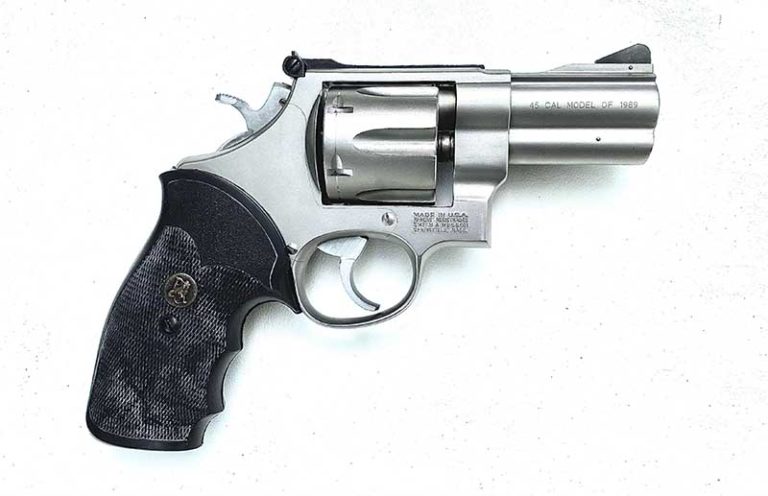
.45 Auto isn’t just for the 1911, there are plenty of good reasons to keep rolling with a .45 ACP revolver.
Over the course of my life, I’ve frequented dozens of gun shops and countless gun shows. The thing with these routines is that they seldom yield more than passing curiosities and the occasional sporterized atrocity. I find that gun shows today are better for buying and selling silver and gold than they are guns, and guns stores have gone from hubs of information and opinion to sterile retail spaces. On rare occasions, I find something truly valuable and interesting, and on one such foray, I happened upon a very rare .45 ACP revolver: the Smith & Wesson Model of 1989.

The Smith & Wesson Model 1989
The reason I dropped a cool chunk of change on this gun was that it had personal significance to me: One being that it’s a .45 ACP, my favorite round of all time, and the second that it bore the year of my birth. I simply had to have it and, despite not knowing much about it, I slapped down some change and took it home.
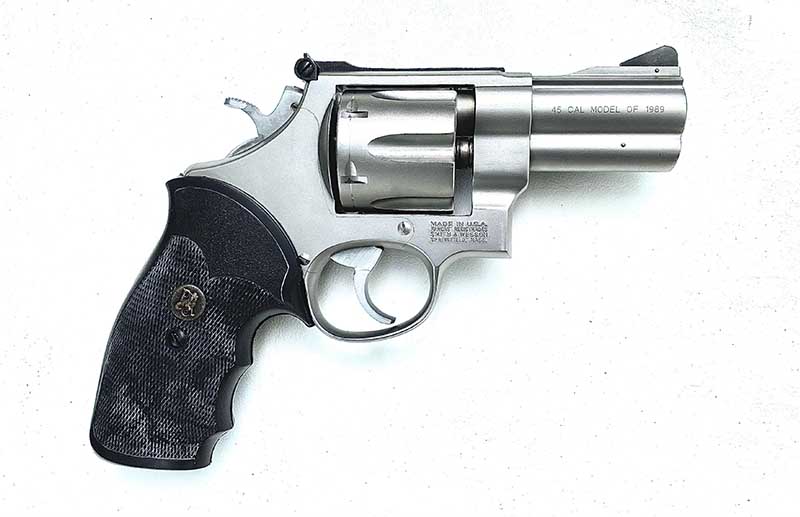
I’d never heard much about the Model of 1989, and I needed to do some research to further my understanding. My immediate observation was that it was one from the “good” years of S&W. It had no lock hole in the frame and bore a hammer-mounted firing pin. I know a good deal about the S&W brand, and I recognized that I had something here that was fairly unique. So unique in fact, that not even S&W was able to tell me much about it except that it was, in fact, their product and that it was, as far as they could tell, made between 1989 and 1990. They couldn’t provide me with any other real information or even a number produced. Their archives, they explained, dealt primarily with much older guns.
I had my work cut out for me, and I went about talking to some of the better S&W historians I could find and let them see the M1989. Again, I was stonewalled. The revolver was apparently an enigma, and I was instantly offered more than I paid for it by three serious collectors. At this point, I realized that I did have something interesting here, with another call offering me double my purchase price confirming that suspicion.
I was unable to find much information at first—that is until I dove into auction records and published sale prices. The variant I had was the most desirable, the 3-inch 625-3. This version, I began to discover, was selling for anywhere from $1,200 up to $2,500 depending on features. Mine didn’t come with an original box, but it did have the original grips. The grips were in sad condition, but as far as I can tell, they were the actual set of Pachmayrs S&W shipped with the gun. As you can see in the photos, I have a couple of sets of VZ grips that I carry and shoot it with. They’re great grips and look exceedingly clean.
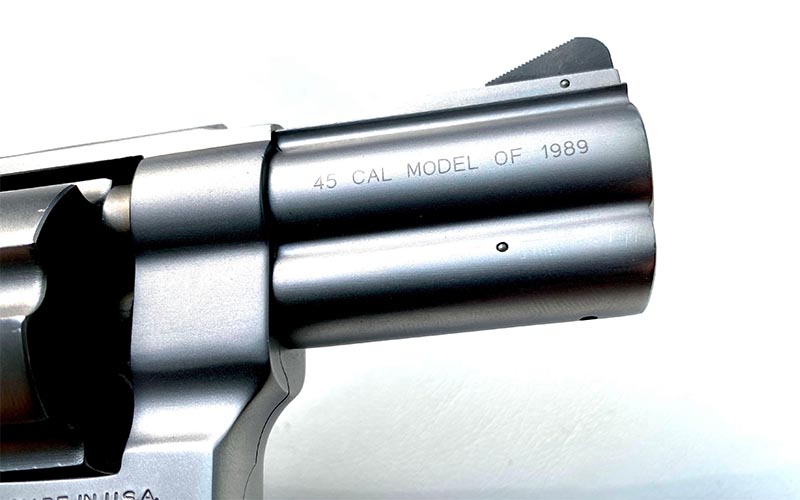
I began to dig further until I came out with some general manufacturer numbers of the time period. Then, it all made sense. As far as two of the collectors know, about 800 to 1,000 of this model were made from 1989 to 1990, a relatively short window. Other variants continue today; however, the original run supposedly was discontinued somewhere around 1994 to 1995. They were esteemed among collectors for not just their rarity, but for the fact that, at the time, they were the most feature-rich revolvers available and basically competition-ready right out of the box.
The history of the design is somewhat confusing; this is why they can be so valuable and rare. Some design changes occurred in 1989, but as far as I can research, this applied to some of the cylinder geometry and not the overall features of the gun. This distinction is enough that one collector wanted to take measurements of it. I declined for fear I’d get a wad of cash back and not my revolver. I eventually relented; however, he wasn’t able to determine which small variations mine possessed.
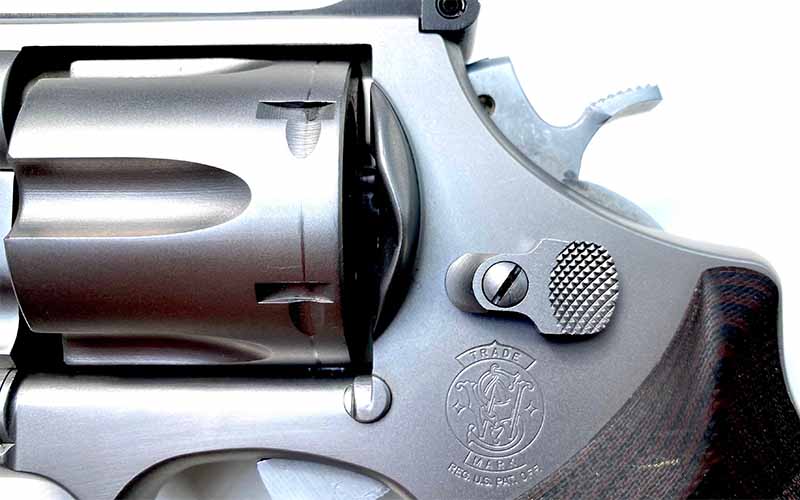
To further make things muddy, he informed me that the total M1989 production, including 4- and 5-inch versions, totaled about 1,000 guns, making mine probably one of only 500 or less. His sources amounted to be from some internet forums and folk knowledge, which I found dubious. But, because S&W was unable to provide me with the information, I have to take the word on the street as credible.
History of the .45 ACP Revolver
Historically, the .45 ACP has always been a revolver round. This might seem untrue until you realize that the .45 ACP directly replaced two revolver rounds in service (.45 Colt and .38 Long Colt) with the adoption of the 1911. The 1911 never really saw peace and was immediately thrust into war; just a few years after its introduction, it was in combat in Mexico against Pancho Villa. Following that, World War I broke out and the 1911 was sent into the trenches.
The supply issues of that time saw the introduction of revolvers chambered for .45 ACP. This came from necessity, as the 1911 was a reliable gun but it hadn’t yet been made in significant numbers. Under 70,000 had been made by Colt at that time, and stopgaps were needed to fill in.
Two variations with the same general features were made, one by Colt and the other by Smith & Wesson, and each was called the M1917. They aren’t the same design, however, and collectors fight over a number of minor details and variations. The Colt version was arguably a bit better according to collectors. Having shot both, I can’t say for certain the Colt is superior; ergonomics and handing were comparable. It was basically a M1909, an established Colt product at the time, with a cylinder designed for .45 ACP.
Smith & Wesson followed Uncle Sam’s request and modified their popular 44 Hand Ejector to work with the .45 ACP round. Some shooters and collectors consider this to be an afterthought of a design, as the Colt was considered to be more accurate and more robust. There isn’t much to say if this is true as far as combat records go, but I haven’t been able to find any serious complaints. Over 300,000 of these guns were built in total at an almost perfect 50/50 ratio of Colt to S&W.
Some of these guns were overhauled after WWI for the interwar period, and many saw service again in WWII. This time was the same as the first, and the M1917, of both types, was issued out primarily as a rearguard measure and to fill in manufacturing gaps in 1911 production, which by 1943 was in full swing. The 1911 would eventually take over completely, and the M1917 variants would be sold off to other countries or distributed to military units stateside. Most ended up on the surplus market and sold to civilians.
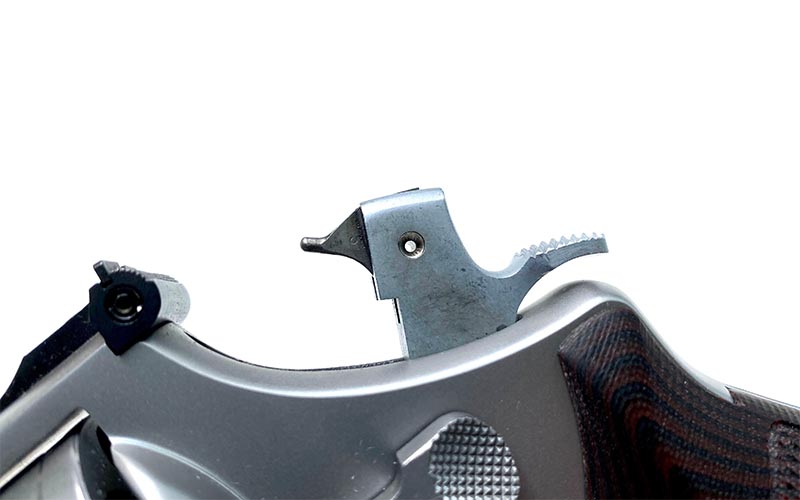
The military history and use of the .45 ACP revolver were positive in most regards; my own grandfather was alleged to have carried one (unknown Smith or Colt) in 25 combat missions over Europe, as the ball turret gunner on a B-17 Flying Fortress. That gun has been lost to time and circumstance; my great uncle says he also had a 1911, but I cannot verify that as my grandfather has been dead for years. Regardless, the photos of his contemporaries show a mix of sidearms, and it’s likely that he carried one or both in his time in the war.
The only other real war story I have on the confirmed use of an M1917 was in 1967 in Vietnam, where a mentor of mine, who I shot CMP with, used it to clear tunnels looking for Charlie. He provided a detailed account of his experiences with it and how well it worked in the tunnels. His main use of the revolver was for tight spaces, where he was worried the slide would jam if he had to fire it. Indeed, many of the men sharing his occupation also carried revolvers, though the caliber of those is open to speculation.
While it’s not often celebrated in this sense, the .45 ACP revolver has had a tremendous and long military career spanning 7 decades. This is why I said that the .45 ACP has always been a revolver round; it started seeing use in combat in the 1911 in 1916 and was in fighting revolvers only a year later, making its use in wheelguns essentially as early as in semi-autos. The .45 ACP revolver isn’t a novelty, rather it has been a quiet mainstay of .45-caliber history, often riding shotgun to its more modern counterparts.
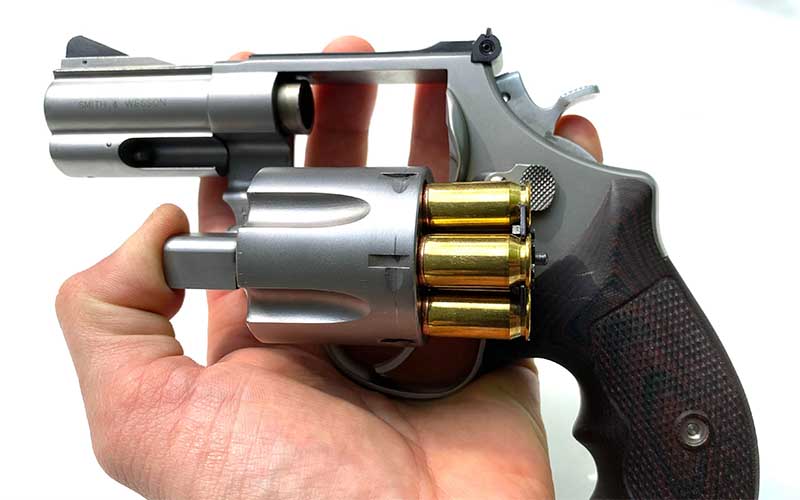
Ballistics of a .45 ACP Revolver
The interesting part of the .45 ACP in a revolver is that, when paired with moon clips, it makes a remarkably fast and accurate package that’s easy to shoot and reload quickly. The generous chambers help the moon clips drop in easily, and a reload can be accomplished in equal time to a semi-auto with practice. The downside is that you only get six shots, where a reload for a 1911 can be quite a bit more, depending on the magazine type.
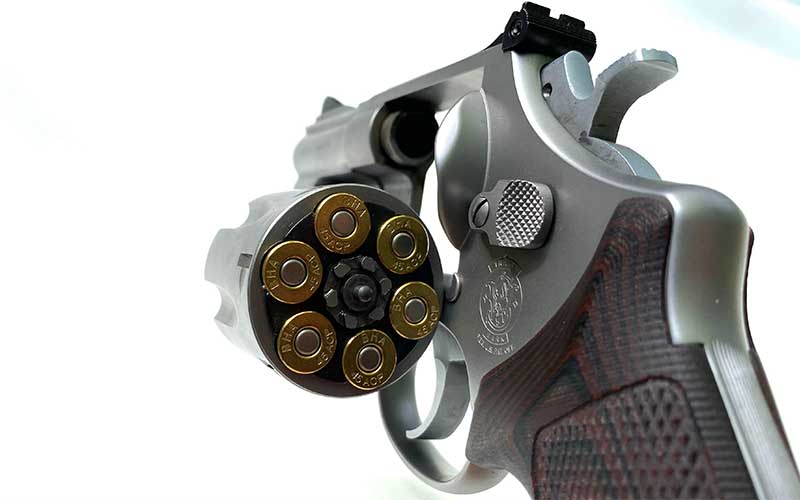
As far as ballistic qualities go, the 3-inch M1989 is no slouch. The gun is heavy and made of all steel, making even heavy +P loads feel like a sneeze. The barrel itself is short at 3 inches, but the .45 ACP doesn’t need a tremendous amount of tube to get going. Velocities are only 50 fps slower than a 5-inch 1911 as an average. The only variations of significant note being the Black Hills (BHA) 135-grain HoneyBadger, which left the 3-inch barrel 120 fps slower than the Colt M45 … at 1,130 fps!
Overall, there isn’t a significant velocity drop in a 3-inch .45 ACP, and it’s fair to say it’s just as capable in terms of handling. The BHA 230-grain FMJ clocked 740 fps, BHA JHP+P at 880 fps and BHA 185-grain JHP at 933 fps. I really do like that it’s a 3-inch, because it’s short enough to be a good chest rig gun while not really giving up that much for velocity over a 1911. Shooting Buffalo Bore Hardcast Outdoorsman 225-grain +P is right up there at .45 Colt levels in terms of power and penetration.
Of note here is the fact that the .45 ACP can be fired in the M1989 without moon clips, but the ejector cannot remove them. You’ll need a fingernail or pencil to pop them out one at a time should you forgo the clip entirely.
Moon Clip Blues
Moon clips are one of those practical little things that appear easy to make but are just as easily screwed up. The thin pieces of metal are a true “clip,” not a magazine. They’re reusable; however, they retain the fired brass instead of ejecting it like a semi-auto does
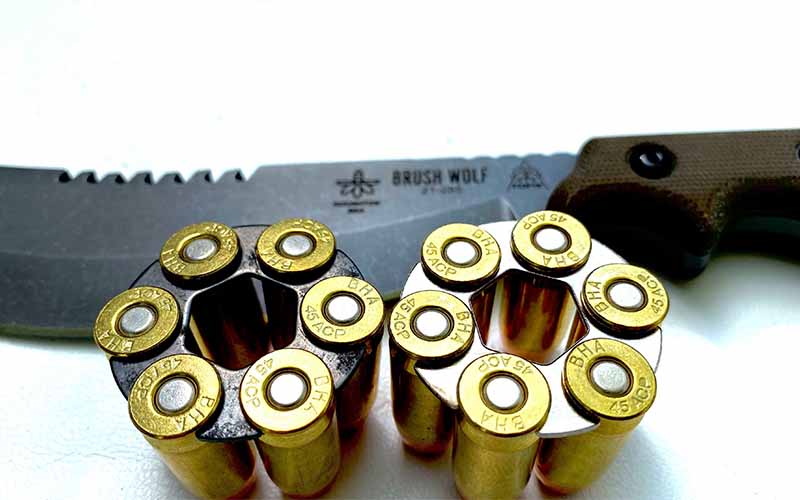
It should be noted that there are different types and thicknesses of moon clips, and your individual revolver may not function with all of them. Because they grip the case and hold it physically, problems can occur if using too thick or too thin a clip in relation to the primer and case head being too far or too close to the frame. They can be picky, but when you find the right thickness, you’ll be rolling with the best of them.
Conclusion
The particular revolver I have here is, as I detailed ad nauseam, is no longer made and there isn’t a sure way to find one or even find much information about it. At this point S&W doesn’t list a .45 ACP revolver on their site, although they produced several versions up until recently.
They’re out there today—although every model chambered for the old warhorse is in high demand. If you can find one, expect to pay above the original list price. While they may not be completely practical in a 1911 world, the .45 ACP revolver is bona fide Americana and has a special place in the consciousness of many … myself included.
Editor's Note: This article originally appeared in the August 2021 issue of Gun Digest the Magazine.
Raise Your .45 ACP IQ:
- 10 Top .45 Pistol Options For Any Budget
- .45 ACP vs 9mm: Which Is Better?
- .45 Ammo Choice For Self-Defense
- 10mm Vs .45 ACP: Making the Right Choice

Next Step: Get your FREE Printable Target Pack
Enhance your shooting precision with our 62 MOA Targets, perfect for rifles and handguns. Crafted in collaboration with Storm Tactical for accuracy and versatility.
Subscribe to the Gun Digest email newsletter and get your downloadable target pack sent straight to your inbox. Stay updated with the latest firearms info in the industry.

![Best Concealed Carry Guns In 2025 [Field Tested] Wilson Combat EDC X9S 1](https://gundigest.com/wp-content/uploads/Wilson-Combat-EDC-X9S-1-324x160.jpg)


![Best 9mm Carbine: Affordable PCCs [Tested] Ruger Carbine Shooting](https://gundigest.com/wp-content/uploads/Ruger-Carbine-Shooting-100x70.jpg)
![Best AR-15: Top Options Available Today [Field Tested] Harrington and Richardson PSA XM177E2 feature](https://gundigest.com/wp-content/uploads/Harrington-and-Richardson-PSA-XM177E2-feature-100x70.jpg)

I have a model 1989 in 5 inch. Maybe 300 rounds in it. It’s smooth and I shoot well with it. Reloading is a snap- I don’t even think. It’s a beauty and recoil is like a 38 special. Accurate as all heck!
Owning both S&W [Brazilian contract] and Colt, my vote goes to S&W. I have small hands and it is easier to reach the trigger on the S&W. Plus the Colt sights are a poor second place to the S&W. One of the sweetest S&W 1917’s, I have ever seen had a 5” bull barrel and a red dot sight. Unfortunately it went for more than what I could afford. Now, today after reading about the Taurus with the red dot, I wish I had bid a little more.
I use both the S&W 625 X5 and the 4506 and load both with 320g GI ball. Recoil is not an issue and neither of these firearms have ever failed to fire in all manner of situations and the .45 ACP GI does stop an argument promptly, as it was designed to do. AS the saying goes “Fast and thin goes right in, but , slow and thick does the trick. Real close work with a 1911?!? Grip safety pinned , cocked and locked, thumb safety engaged , firing pressure on trigger, fire with thumb safety.This works, if it did not I would not be here to tell you about it. Love to have that 3 inch.
I have one ported and use the Sierra revolver load data, getting 600 foot pounds. A very good defense gun with its crimson trace grip. It shoots as well as the Miculek four inch and is an easier carry with IWB holsters.
Back in the late 1990s I purchased both a 5-inch and 3-inch S&W 1989 from a gentleman who was closing his gun shop in Alpine, Texas for less than $400.00 each, which I thought at the time to be a little bit of a high price. I still have the 5-inch, but a good friend, who is no longer with us, talked me out of the 3-inch and it vanished when he passed (he liked it so much I’m wondering if he didn’t manage to take it with him). Just one more of those guns I used to have that I wish I still did, and there are a bunch of them, as most shooters can also claim.
I had a 1989 5″ that I used to compete with in local matches. Cylinder & Slide made a double action only roller conversion that did not require modification of the gun itself, and it was smooth ! With full moon clips one could reload it as fast or faster than a semiautomatic or a revolver with speed loaders, as the clip of six .45 buckets just fell out of the gun, and you could just about throw the new loaded clip at the cylinder and it would go home. The beauty of the 1989/625 is that you could shoot loads that would never cycle a semiautomatic, with 38 Special recoil. The larger diameter bullet always seemed to be good for a few extra points as well. I reply regret letting mine go. You truly have a treasure.
CAN ALSO SHOOT REMINGTON 45 AUTO RIM CARTRIDGES
Love my Charter Arms Pitbull on .45ACP. This 5 shot doesn’t need moon clips to eject the cases.
I’d love to have it, but it’s out of my wheelhouse with that price. Smith made other model 25’s in 45ACP. My favorite variation is the Jovino Effector. The only pistol like that today is the Charter Arms 45 acp revolver, but it’s not a smith.
I remember a Police Sergeant from a nearby agency that carried one. I don’t remember what load his department issued, at the time my agency issued Hydra-Shoks.
“The .45 acp has always been a revolver round”? Automatic Colt Pistol by definition seems to counterdict your statement, but I do share using the round as a cheaper alternative for feeding my S&W Governor!